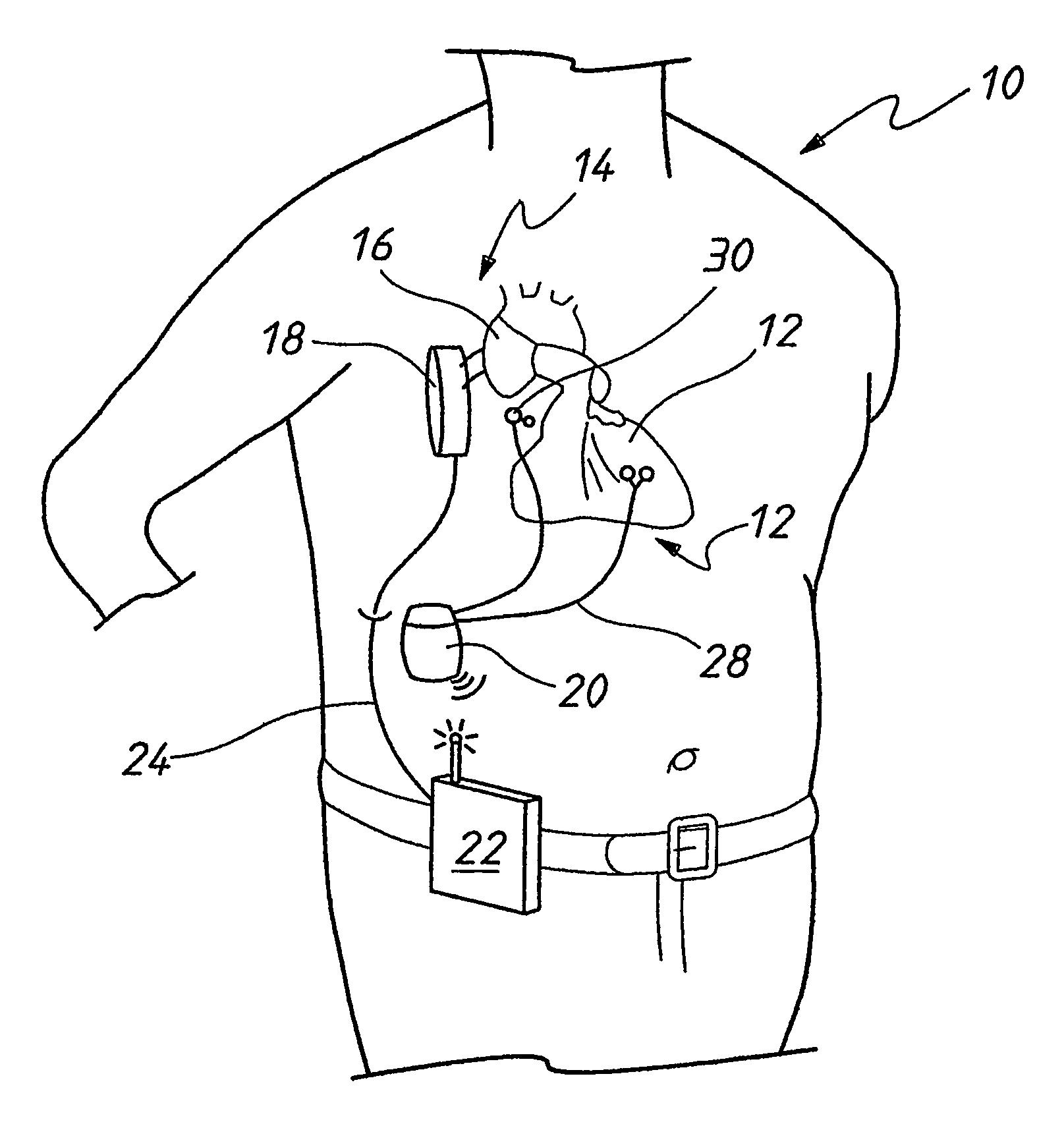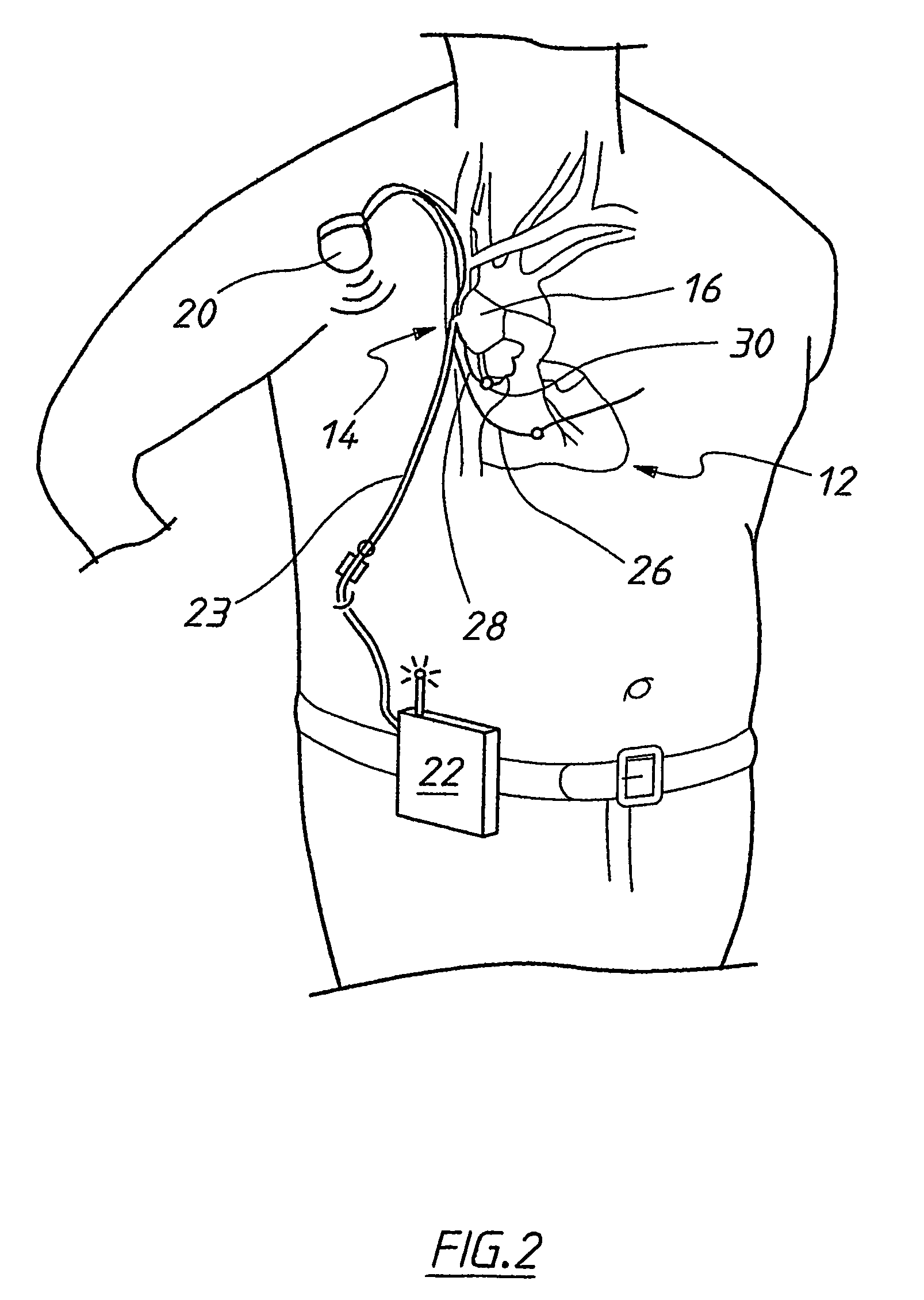Synchronization control system
a control system and synchronization technology, applied in the field of synchronization control system, can solve the problems of severe limitations in the application of the control device for heart assist devices, inability to meet the needs of long-term use, and inability to meet the needs of patients, and achieve the effect of rapid correction of the condition
- Summary
- Abstract
- Description
- Claims
- Application Information
AI Technical Summary
Benefits of technology
Problems solved by technology
Method used
Image
Examples
Embodiment Construction
[0052]By way of further background, the DSPT has the basic modalities of sensing, transmitting, and programmability.
[0053]Sensing is the capability to detect and interpret a patient's native heart electro- and phonocardiograms (ECG's and PCG's respectively). An implanted sensing lead detects the patient's native heart electrical activity and transmits it to the DSPT circuitry. The firmware and / or software within the DSPT unit interprets the patient's R-wave and transmits a signal indicating R-wave detection. An implanted microphone lead detects the patient's native heart sounds and transmits it to the DSPT circuitry. The firmware and / or software within the DSPT unit interprets the patient's heart sounds and transmits a signal indicating S1 and S2 detection.
[0054]Programmability is the capability to allow a physician to adjust the DSPT's sensing and transmitting functions to the patient's individual needs. This is achieved by using a laptop-like device, typically called a programmer,...
PUM
 Login to View More
Login to View More Abstract
Description
Claims
Application Information
 Login to View More
Login to View More - R&D
- Intellectual Property
- Life Sciences
- Materials
- Tech Scout
- Unparalleled Data Quality
- Higher Quality Content
- 60% Fewer Hallucinations
Browse by: Latest US Patents, China's latest patents, Technical Efficacy Thesaurus, Application Domain, Technology Topic, Popular Technical Reports.
© 2025 PatSnap. All rights reserved.Legal|Privacy policy|Modern Slavery Act Transparency Statement|Sitemap|About US| Contact US: help@patsnap.com



